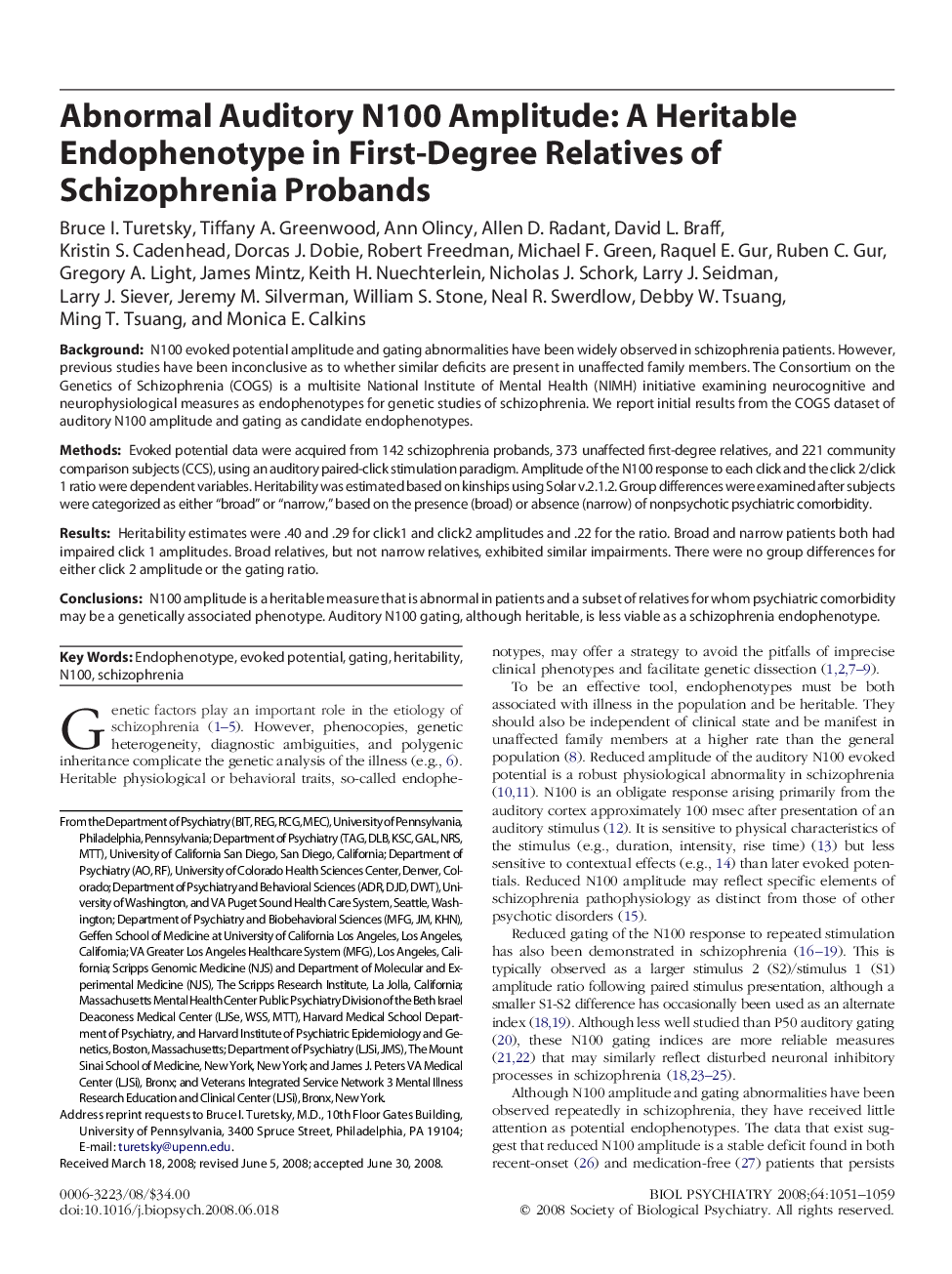| Article ID | Journal | Published Year | Pages | File Type |
|---|---|---|---|---|
| 4180042 | Biological Psychiatry | 2008 | 9 Pages |
BackgroundN100 evoked potential amplitude and gating abnormalities have been widely observed in schizophrenia patients. However, previous studies have been inconclusive as to whether similar deficits are present in unaffected family members. The Consortium on the Genetics of Schizophrenia (COGS) is a multisite National Institute of Mental Health (NIMH) initiative examining neurocognitive and neurophysiological measures as endophenotypes for genetic studies of schizophrenia. We report initial results from the COGS dataset of auditory N100 amplitude and gating as candidate endophenotypes.MethodsEvoked potential data were acquired from 142 schizophrenia probands, 373 unaffected first-degree relatives, and 221 community comparison subjects (CCS), using an auditory paired-click stimulation paradigm. Amplitude of the N100 response to each click and the click 2/click 1 ratio were dependent variables. Heritability was estimated based on kinships using Solar v.2.1.2. Group differences were examined after subjects were categorized as either “broad” or “narrow,” based on the presence (broad) or absence (narrow) of nonpsychotic psychiatric comorbidity.ResultsHeritability estimates were .40 and .29 for click1 and click2 amplitudes and .22 for the ratio. Broad and narrow patients both had impaired click 1 amplitudes. Broad relatives, but not narrow relatives, exhibited similar impairments. There were no group differences for either click 2 amplitude or the gating ratio.ConclusionsN100 amplitude is a heritable measure that is abnormal in patients and a subset of relatives for whom psychiatric comorbidity may be a genetically associated phenotype. Auditory N100 gating, although heritable, is less viable as a schizophrenia endophenotype.
